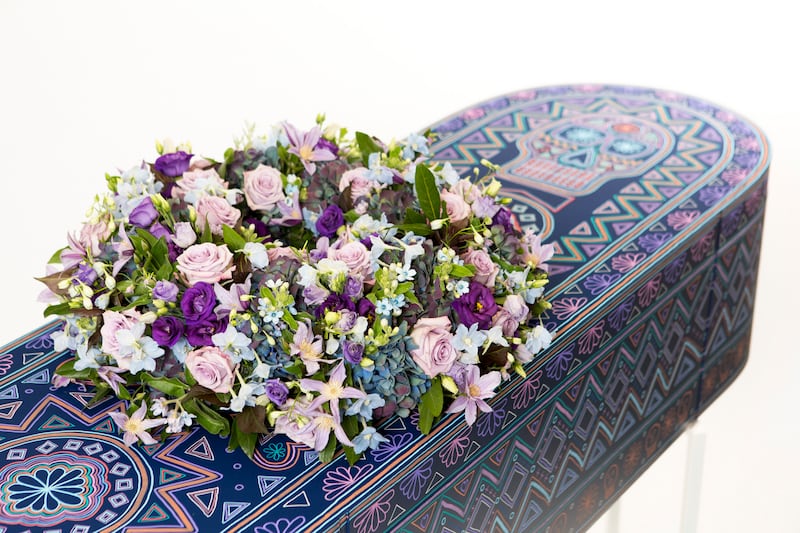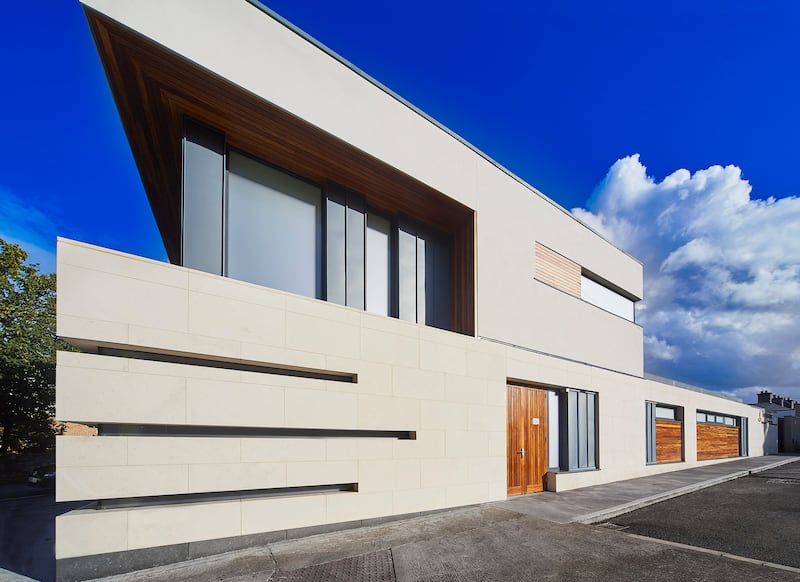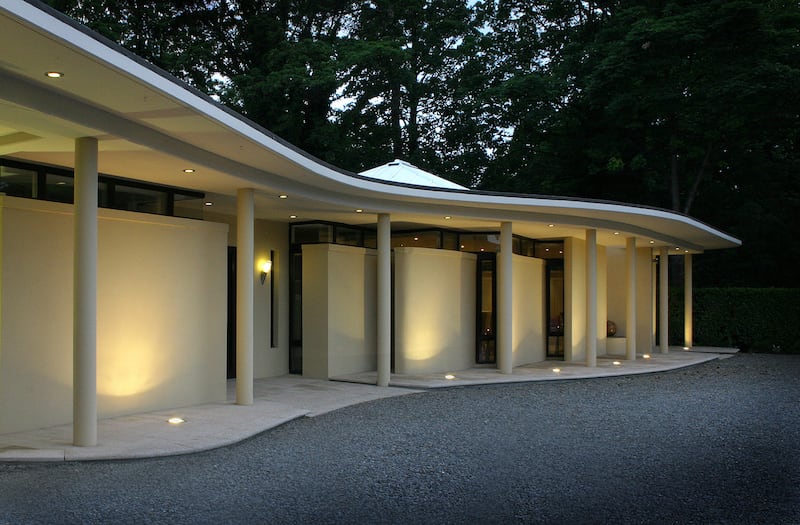A ritual that is as old as time itself needed a makeover, says London-Irish restaurateur Oliver Peyton. The Sligo man who ruled 1990s London nightlife has hit the headlines with his end-of-life Exit Here collaboration – a hipster funeral parlour, that is, he says, "dragging the business into the 21st century while bypassing much of the 20th century".

The idea germinated when his father died suddenly of a heart attack about six years ago. “The family made a bit of a fluff of the arrangements,” he says. He had very little experience of funerals other than attending them and found the whole experience bewildering. He said he kept thinking: “This is not how I want my funeral to be.”
“It made me think that we have to change the way we look at death,” he explains. “In life we plan all our celebrations and dying without giving people an idea of how you want your funeral to be is very stressful for those left behind. It should be about taking care of people. It should be about hospitality.”
Exit Here has generated plenty of online discussion but is Ireland ready for such a design-led offering? Some design has crept in here, says Gus Nichols, who is part of a family business that is more than 200 years old, but the position also requires a lot of functionality. "You need a broad range of abilities to do this job for you're part counsellor, part lawyer, part accountant and part furniture shop. You need ultra-reliable third-party suppliers, everything from singers to printers to sound and vision guys to caterers."

Landmark
The Nichols premises on Lombard Street East in Dublin 2 is a landmark in Ulysses as Joyce's hero rambles through the city in the Lotus Eaters chapter: "He crossed Townsend Street, passed the frowning face of Bethel. El, yes; house of; Aleph, Beth. And past Nichols' the undertakers."
The Nichols name is synonymous with the undertaking business. The family firm is now part of the Fanagan Group that also includes Kirwan's and Carnegie's.
Modernity has crept in slowly. Until about 10 years ago the church service was by far the most popular choice and in Dublin it still accounts for about 40 per cent of all funerals, says Nichols. “But with fewer priests churches are less able to take more than one funeral a day, so funeral homes are now accommodating mourners for the wake and service.”
This is evidenced in the design of new premises within the Fanagan Group. Its new home in Rathfarnham, on the site of the Tuning Fork pub, is not Exit Here but it is a lot more modern than heretofore, Nichols says. Designed by architect Philip Doyle of MDP & Partners it has a cedar-clad exterior and long clerestory windows that bring light in at a high level that stops the place feeling dark but doesn't let the public gaze in. It offers well-designed privacy.

Ben Masterton-Smith of Transit Studio, who designed Peyton's Exit Here, knows the Mayo man from their collaboration on his cafe at London's Royal Academy. He designed rooms with curved walls and privacy screens to the front where there are floor-to-ceiling windows, to create comfortable spaces and a sense of openness that gives people a sense of distance, he explains. Its corridors are curved and there are arched doorways, all softer looking visually that hard straight lines.
Design is creeping into the industry here, says Stuart Collier of Collier's Funeral Directors on Old Connaught Avenue in Bray, Co Wicklow. When expanding the premises about a decade ago he hired architect Mark Price, who created a curved and pillared building that conceals within it a double-height room where people can host wakes and services. Naturally lit from the glazing of its lantern roof light, the space below feel quite cocooned, where family and friends can gather to wake their loved ones, sometimes the night before a service, sometimes just before the service, he explains.
“With the numbers living in flats and apartments having increased, many are not able to facilitate a wake in their homes. So we can organise it for them,” he says. The firm can also organise musicians, although he says more and more people are providing playlists, from one of the streaming services. “They want the flexibility of a more modern service that is not just hymns.”

Lack of choice
When Peyton’s mother passed away he was bewildered by the lack of choice in service times. “It takes some of the joy out of it. The service was 11am on a Tuesday morning. I would much prefer a time suitable to people coming, say, 5pm in the evening, to facilitate some people who may be working. It should be much more about the experience.”
Peyton’s Exit Here menu includes a range of caskets options including a Swedish imported design made of biodegradable mushroom compost and others made of MDF. These come in at least five colours and are customisable. You can, for instance, have one with Mexican Day of the Dead motifs.
There is a choice of ceramic finishes in the urns too and Peyton is also parlaying with artists to create works that will be even more covetable. “They’ve got to look cool,” he says.
The ability to customise coffins and suchlike is easier to do in the UK where there is a three- to four-week gap between death and burial, Nichols explains. “In the UK you have to have your death registered before you can make funeral arrangements. In Ireland you have three months to register a death, after the person has died.” Here you get a four- to five-day window from notice to burial.
One big change that mourners will have noted is that coffins have become greener. Nichols offers hand-made wicker coffins, made by Colin McAleer, who runs Green Coffins Ireland from his Fanad Head base in Co Donegal. At least 30 per cent of the coffins used here are made in Ireland, while the rest include imports from Poland where there is still a willow craft, McAleer explains.
The early wicker ones scared the life out of people here, Nichols says. “We didn’t know how robust they were and how good the seal might be. They still creak a little but water hyacinth is another option.
One of the nicest on offer is a traditional style Irish pine box from Humphrey Lynch's eco range. The wood is sourced locally from sustainable sources and prepared in the company's sawmill in Ballymakeera, Co Cork, where it is simply furnished with rope handles and lined with natural, unbleached cotton. It has a cowboy sensibility – it looks very like the pine box prop that used to be a feature of the hanging scenes in mid-century western films.
In Victorian times they did things in a day, Nichols says. “In Ireland its about five days from instruction to burial. In London the average is 21 days.”
Humanist services
People now know what they don’t want, says Nichols, more than what they actually want. “How people memorialise the occasion has to be factored into the equation. It may be collage of photos, printed service sheets or a commemorative booklet,” Nichols says.
He says many do not want a church service with a priest who did not know the deceased. A humanist service is an option. "They may prefer to go to a hotel, or to host the service at Croke Park or in the Royal Hospital, Kilmainham, " Nichols says.
Design has crept into the service itself too. For those looking for something spiritual, Pearl Kilkenny-Fleming, a former psychotherapist turned OneSpirit Interfaith minister, offers a liturgy that is personal to the deceased and is written only after she has met the family and has learned something of who the deceased was. She gets a lot of calls from Massey Brothers.
Another sea change is the move away from Victorian black, Peyton says. Exit Here pallbearers will be clad in navy suits rather than any shade of night, for instance. For country funerals he’s offering a Barbour look for those settings where a suit may look a little incongruous.
Peyton is keen to extend his funeral home business to three within London and is looking to launch in Ireland too. Will it catch on? His rationale makes sense. “There isn’t one style of restaurant so why not more than one style of funeral service and celebration,” he asks. “I’m a hospitable person – it’s in my DNA to be hospitable. Death is simply part of the cycle of life.”



















